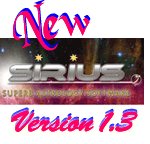 COSMIC
PATTERNS SOFTWARE, INC.| WWW.ASTROSOFTWARE.COM
COSMIC
PATTERNS SOFTWARE, INC.| WWW.ASTROSOFTWARE.COM
| PRODUCTS | SOFTWARE DEMO | SERVICES | INFORMATION | COMPANY | CATALOG | PURCHASE | ASTROLOGY READING | CONTACT US |
| COSMIC PATTERNS SOFTWARE TUTORIALS |
| CONTINUATION OF SIRIUS SOFTWARE VIDEO TUTOTIALS.
|
|
|
|
|
![]() CLICK HERE TO VIEW DAVID COCHRANE'S SIRIUS
CLICK HERE TO VIEW DAVID COCHRANE'S SIRIUS
SOFTWARE VIDEO
TUTORIALS ON YOUTUBE
 All
Contents Copyright © Cosmic Patterns Software, Inc All
Rights Reserved. ~
Updated
Thursday, May 30, 2013 1:42 PM
All
Contents Copyright © Cosmic Patterns Software, Inc All
Rights Reserved. ~
Updated
Thursday, May 30, 2013 1:42 PM
